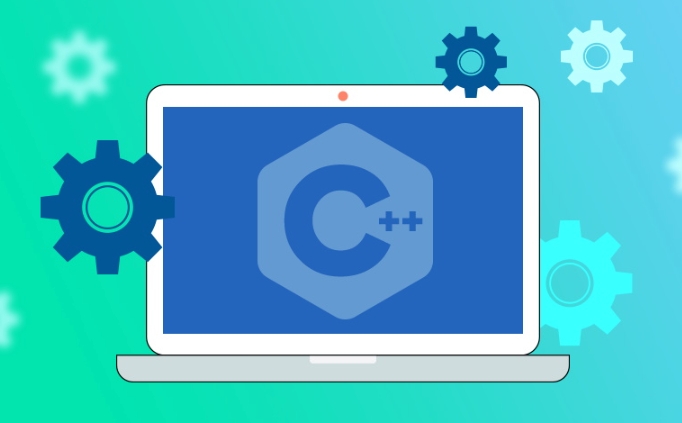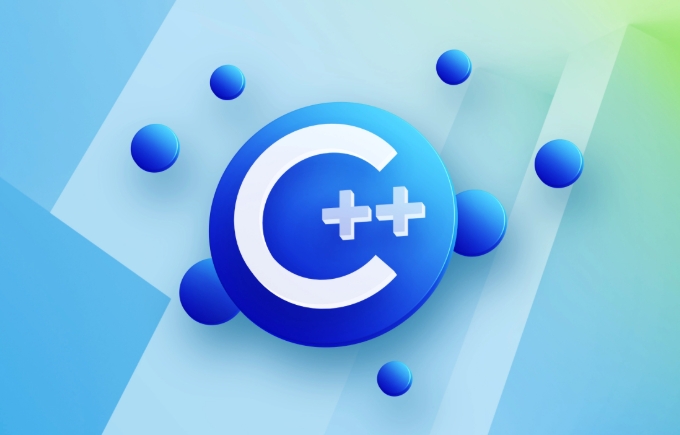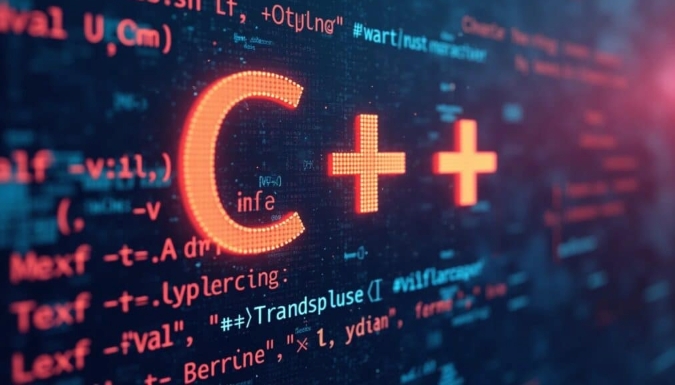To learn C system programming, you need to master basic syntax, memory management, operating system interfaces, multi-threading and debugging tools. First, be familiar with the basic syntax of classes, pointers, references, arrays, etc., understand the difference between pointers and references, memory allocation and release timing, RAII ideas and smart pointers; second, master POSIX APIs such as fork(), exec(), pthread_create(), and understand thread synchronization, race conditions and atomic operations; second, be proficient in using GDB debugging, Valgrind to detect memory problems, and strace tracking system calls; finally, improve practical capabilities by implementing small projects such as shell interpreters, network communication programs, and log systems.

It is actually quite common to learn C to do system programming. C is suitable for this because it is close to the hardware, has good performance, and can operate memory directly. If you are writing operating systems, drivers, embedded systems or underlying tools, then this tutorial will help you clarify the direction.

Learn basic grammar and memory management well
In system programming, resource control is very important, so you have to first lay down the basic skills of C. For example, you must be familiar with classes, pointers, references, and arrays. Especially in memory management , the usages of new/delete, malloc/free cannot be errored, otherwise it will easily lead to memory leakage or segfault.

Suggested understanding of key points:
- The difference between pointers and references
- Memory allocation and release timing
- Design idea of ??RAII (resource acquisition is initialization)
- Use smart pointers (unique_ptr, shared_ptr) instead of naked pointers
For example, writing a simple memory pool under Linux or implementing your own string class is a good way to practice.

Familiar with operating system interfaces and multithreaded programming
System programming is inseparable from the interfaces provided by the operating system, such as file reading and writing, process control, signal processing, thread synchronization, etc. In this part, you need to master the APIs under the POSIX standard, such as how to use functions such as fork() , exec() , pthread_create() , and mmap() .
Multithreading programming is particularly important. C 11 has supported threads since the standard library, and you can use <thread></thread> and <mutex></mutex> for concurrent control. But also note:
- Avoid race conditions
- Use lock mechanism rationally
- Understand atomic operations and memory order
For example: you can write a multi-threaded server to listen to socket requests, and each connection opens a thread to process it. This kind of scenario is very common and can be practiced.
Master debugging and performance analysis tools
Writing the underlying code is prone to problems, and many problems are not easy to reproduce. At this time, you will rely especially on debugging tools and performance analysis methods. GDB must be used. In addition, Valgrind can check memory leaks, strace can track system calls, and perf can analyze hotspot functions.
Suggest you:
- Use GDB to set breakpoints, view stacks, and modify changes
- Check memory access out of bounds and leaks with Valgrind
- Use strace to see which system functions are called during the execution of the program
Only when the debugging capabilities improve will the development efficiency be higher. Especially when encountering problems such as segfault and deadlock, tools can help you quickly locate the cause.
Practical project recommendation
Just reading tutorials is not enough, the key is to do it. You can start with some small projects and slowly increase the difficulty. for example:
- Implement a simple shell interpreter (parse commands, create child processes)
- Writing TCP/UDP client and server communication programs
- Making a log system that supports multi-threaded write and log-level filtering
- Try writing a small memory management module
Although these projects are not complicated, they can help you string together the knowledge you have learned. And after making it, you can also write some actual content on your resume.
Basically that's it. System programming is a slow job that requires patience and practice. C is just the starting point as a tool. What is really important is the understanding of the system mechanism and hands-on ability. Don’t be afraid of getting stuck in pitfalls. Check more documents and read more source codes. Make progress naturally fast.
The above is the detailed content of C tutorial for systems programming. For more information, please follow other related articles on the PHP Chinese website!

Hot AI Tools

Undress AI Tool
Undress images for free

Undresser.AI Undress
AI-powered app for creating realistic nude photos

AI Clothes Remover
Online AI tool for removing clothes from photos.

Clothoff.io
AI clothes remover

Video Face Swap
Swap faces in any video effortlessly with our completely free AI face swap tool!

Hot Article

Hot Tools

Notepad++7.3.1
Easy-to-use and free code editor

SublimeText3 Chinese version
Chinese version, very easy to use

Zend Studio 13.0.1
Powerful PHP integrated development environment

Dreamweaver CS6
Visual web development tools

SublimeText3 Mac version
God-level code editing software (SublimeText3)
 Using std::chrono in C
Jul 15, 2025 am 01:30 AM
Using std::chrono in C
Jul 15, 2025 am 01:30 AM
std::chrono is used in C to process time, including obtaining the current time, measuring execution time, operation time point and duration, and formatting analysis time. 1. Use std::chrono::system_clock::now() to obtain the current time, which can be converted into a readable string, but the system clock may not be monotonous; 2. Use std::chrono::steady_clock to measure the execution time to ensure monotony, and convert it into milliseconds, seconds and other units through duration_cast; 3. Time point (time_point) and duration (duration) can be interoperable, but attention should be paid to unit compatibility and clock epoch (epoch)
 How to get a stack trace in C ?
Jul 07, 2025 am 01:41 AM
How to get a stack trace in C ?
Jul 07, 2025 am 01:41 AM
There are mainly the following methods to obtain stack traces in C: 1. Use backtrace and backtrace_symbols functions on Linux platform. By including obtaining the call stack and printing symbol information, the -rdynamic parameter needs to be added when compiling; 2. Use CaptureStackBackTrace function on Windows platform, and you need to link DbgHelp.lib and rely on PDB file to parse the function name; 3. Use third-party libraries such as GoogleBreakpad or Boost.Stacktrace to cross-platform and simplify stack capture operations; 4. In exception handling, combine the above methods to automatically output stack information in catch blocks
 What is a POD (Plain Old Data) type in C ?
Jul 12, 2025 am 02:15 AM
What is a POD (Plain Old Data) type in C ?
Jul 12, 2025 am 02:15 AM
In C, the POD (PlainOldData) type refers to a type with a simple structure and compatible with C language data processing. It needs to meet two conditions: it has ordinary copy semantics, which can be copied by memcpy; it has a standard layout and the memory structure is predictable. Specific requirements include: all non-static members are public, no user-defined constructors or destructors, no virtual functions or base classes, and all non-static members themselves are PODs. For example structPoint{intx;inty;} is POD. Its uses include binary I/O, C interoperability, performance optimization, etc. You can check whether the type is POD through std::is_pod, but it is recommended to use std::is_trivia after C 11.
 How to call Python from C ?
Jul 08, 2025 am 12:40 AM
How to call Python from C ?
Jul 08, 2025 am 12:40 AM
To call Python code in C, you must first initialize the interpreter, and then you can achieve interaction by executing strings, files, or calling specific functions. 1. Initialize the interpreter with Py_Initialize() and close it with Py_Finalize(); 2. Execute string code or PyRun_SimpleFile with PyRun_SimpleFile; 3. Import modules through PyImport_ImportModule, get the function through PyObject_GetAttrString, construct parameters of Py_BuildValue, call the function and process return
 How to pass a function as a parameter in C ?
Jul 12, 2025 am 01:34 AM
How to pass a function as a parameter in C ?
Jul 12, 2025 am 01:34 AM
In C, there are three main ways to pass functions as parameters: using function pointers, std::function and Lambda expressions, and template generics. 1. Function pointers are the most basic method, suitable for simple scenarios or C interface compatible, but poor readability; 2. Std::function combined with Lambda expressions is a recommended method in modern C, supporting a variety of callable objects and being type-safe; 3. Template generic methods are the most flexible, suitable for library code or general logic, but may increase the compilation time and code volume. Lambdas that capture the context must be passed through std::function or template and cannot be converted directly into function pointers.
 What is a null pointer in C ?
Jul 09, 2025 am 02:38 AM
What is a null pointer in C ?
Jul 09, 2025 am 02:38 AM
AnullpointerinC isaspecialvalueindicatingthatapointerdoesnotpointtoanyvalidmemorylocation,anditisusedtosafelymanageandcheckpointersbeforedereferencing.1.BeforeC 11,0orNULLwasused,butnownullptrispreferredforclarityandtypesafety.2.Usingnullpointershe
 How does std::move work in C ?
Jul 07, 2025 am 01:27 AM
How does std::move work in C ?
Jul 07, 2025 am 01:27 AM
std::move does not actually move anything, it just converts the object to an rvalue reference, telling the compiler that the object can be used for a move operation. For example, when string assignment, if the class supports moving semantics, the target object can take over the source object resource without copying. Should be used in scenarios where resources need to be transferred and performance-sensitive, such as returning local objects, inserting containers, or exchanging ownership. However, it should not be abused, because it will degenerate into a copy without a moving structure, and the original object status is not specified after the movement. Appropriate use when passing or returning an object can avoid unnecessary copies, but if the function returns a local variable, RVO optimization may already occur, adding std::move may affect the optimization. Prone to errors include misuse on objects that still need to be used, unnecessary movements, and non-movable types
 What is an abstract class in C ?
Jul 11, 2025 am 12:29 AM
What is an abstract class in C ?
Jul 11, 2025 am 12:29 AM
The key to an abstract class is that it contains at least one pure virtual function. When a pure virtual function is declared in the class (such as virtualvoiddoSomething()=0;), the class becomes an abstract class and cannot directly instantiate the object, but polymorphism can be realized through pointers or references; if the derived class does not implement all pure virtual functions, it will also remain an abstract class. Abstract classes are often used to define interfaces or shared behaviors, such as designing Shape classes in drawing applications and implementing the draw() method by derived classes such as Circle and Rectangle. Scenarios using abstract classes include: designing base classes that should not be instantiated directly, forcing multiple related classes to follow a unified interface, providing default behavior, and requiring subclasses to supplement details. In addition, C






